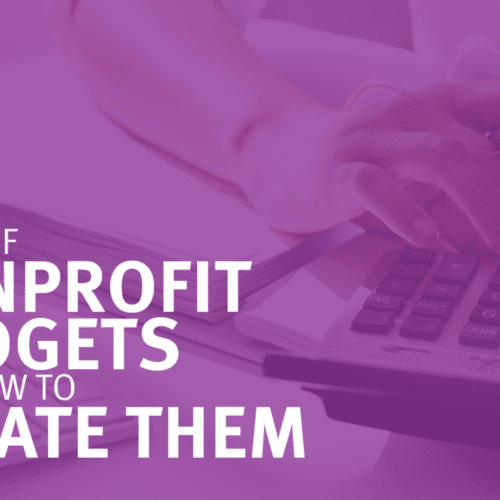If you’re reading this, you’ve probably taken a momentary pause from your full inbox, your double-booked calendar, and your ED or Board who keep coming up with “good ideas” to help your organization fundraise.
I get it. I’ve been there. Whether you’re in a big development office or are a one-person shop, each day feels like an unending cycle on a hamster wheel. And once the calendar hit September, the passage of time began to accelerate. (Am I right?)
Our sector too often seems to promote and glorify working our fingers to the bone. When in reality, true productivity doesn’t come from martyrdom or exhaustion. As we enter the busiest time of the calendar year, stop for a moment and assess what really needs to happen to raise more money. Stop and repeat after me: “First things first.”
Your bandwidth is limited. And unless you’ve figured out how to squeeze more than 24 hours from a day, your time is, too. These three steps can help you focus your efforts to be your most effective:
1. Start with a check on your revenue goals.
How are you tracking against the same quarter last year? How are your donor retention and average gift rates? If your fiscal year ends on December 31, what is the gap you need to raise by the end of the year? Knowing where you have gaps to close should inform your priorities.
2. Prioritize your time on the activities and asks that will raise you more money more quickly.
I’m not talking shotgun solicitations. I’m thinking volunteers (i.e. Board members) who haven’t made their 2018 gifts. Or personally connecting with higher annual donors who gave last year but not yet this year, and who would really appreciate a personal outreach from you, your ED, or a member of your Board. Run a report of those donors and start assigning personal calls and emails (and even in-person visits, if possible). Make it a priority to call or write at least one or two of your donors each day. It’s not only good relationship building. Connecting with your donors reminds you why you do your job.
3. Evaluate everything on your “to do” list and in your inbox.
To quote author and educator Stephen Covey: The key is not to prioritize what’s on your schedule, but to schedule your priorities. In his book First Things First, Covey offers a time management matrix of four quadrants to help define what’s truly at the top of your list. If you don’t have the time now to check out the book, you can still get honest and ruthless in marking your tasks: Must Do, Would Be Great to Do, and Not Now. The Must Dos on your list are the activities and tasks that will help you raise money immediately, in this final quarter of the year. The Would Be Great to Dos are activities which may take longer to implement, may not necessarily result in immediate funding, but are enhancements to your plan. You can consider them again in January. The Not Nows are ideas and projects which are not the best use of your bandwidth this fall, are not the best ROI, and may not fit into you strategic development plan anyway.
Why are these steps important?
They help you get off the hamster wheel and out of a mindset that can only lead to burnout and compromised outcomes.
The process of taking stock and prioritizing also enables you to think strategically about what good fundraising is really about—relationships. Donors want to hear from you with stories of impact and transformation their gifts have made possible. They want to know what you were able to do because of the gifts you received. They want to feel seen and appreciated as part of something bigger.
When you become intentional about identifying what comes first – and keeping it front and center – your limited time and energies will be channeled most effectively.
Here’s to you in the home stretch!





